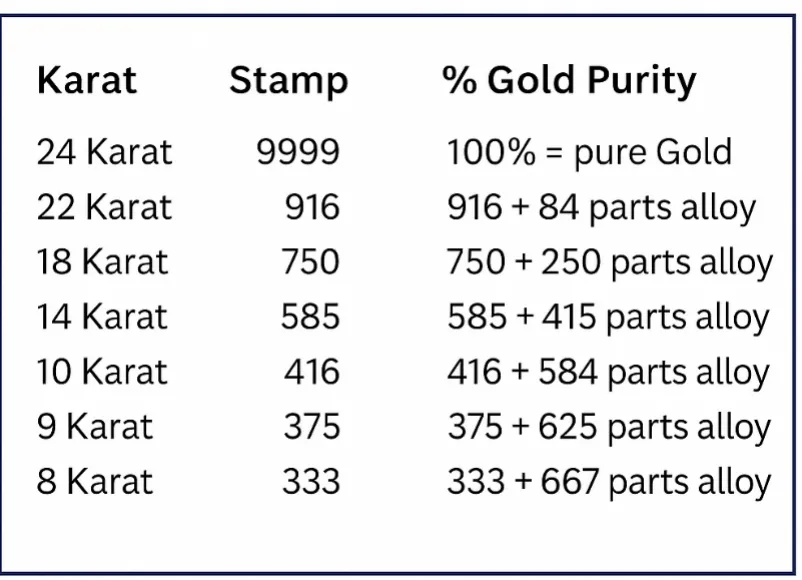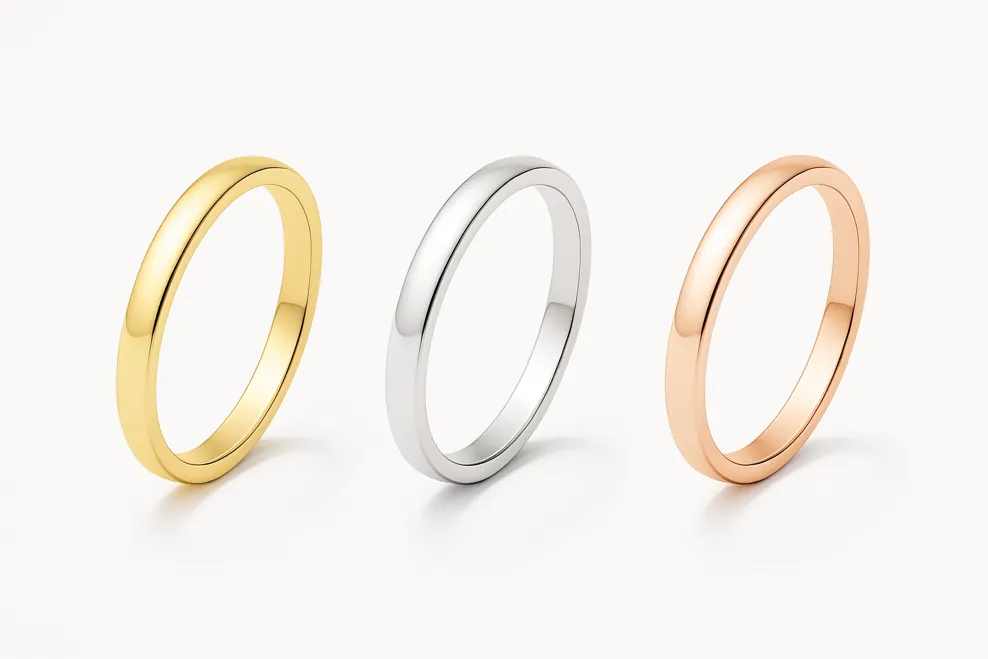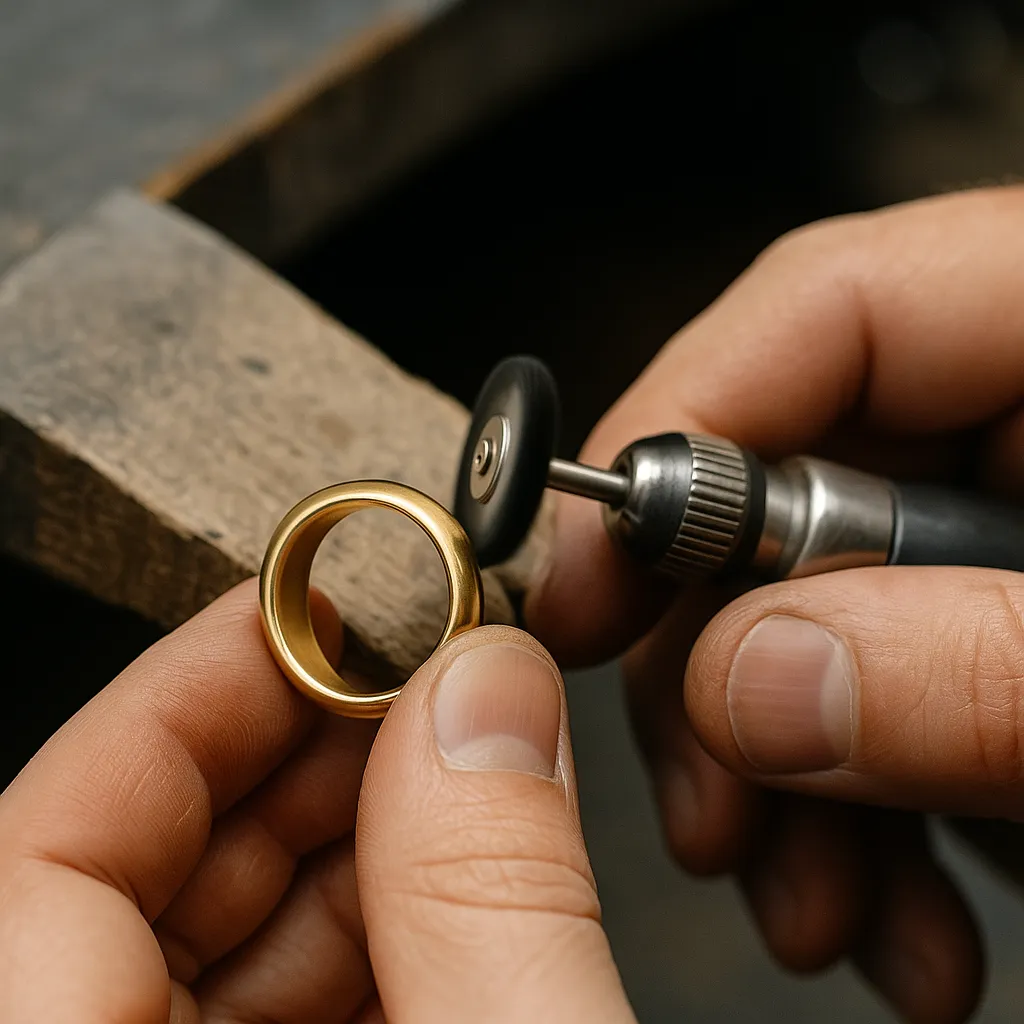The Origin of the Word “Karat”
To fully understand what a karat is, it’s worth exploring its etymology. The word traces back to “quirat,” which was once used in maritime trade to divide the ownership of ships into 24 equal parts.
The term evolved from the Italian “carato”, which in turn derives from the Latin “caratus” and Arabic “qīrāṭ”, all referencing the carob seed, a unit of weight used in Mecca. Even earlier, in ancient Greek, the word “kerátion” referred to the same seed, renowned for its uniform weight — making it an early natural unit of measurement.
What Is a Karat?
A karat (K) is the unit that indicates the purity of gold. Pure gold is defined as 24 karats, or 99.9% gold. Lower karat numbers indicate that the gold is alloyed with other metals for added strength and durability.
Why Is Gold Mixed With Other Metals?
Pure gold (24K) is extremely soft and malleable, which makes it unsuitable for everyday wear. To improve its hardness and durability, gold is alloyed with metals like silver, copper, or palladium. These alloys preserve the look of gold while enhancing its practicality.
Karat and Purity
In jewelry making, a karat is used to indicate the purity level of a precious metal. If we imagine gold divided into 24 equal parts, each karat represents approximately 4.17% pure gold.It’s also worth noting that the term “carat” is used in gemology, but with a different meaning — there, it refers to the weight of a gemstone, with 5 carats equaling 1 gram.
Main Karat Categories
24 Karat Gold
24K gold consists of 99.99% pure gold. It is rare and highly valuable, but also extremely soft, which limits its use in traditional fine jewelry.
22 Karat Gold
22K gold contains approximately 91.6% pure gold. It is slightly more durable than 24K, yet still soft enough to securely hold precious gemstones, making it suitable for traditional styles.
18 Karat Gold
Composed of 75% pure gold, 18K is the most commonly used alloy in fine jewelry. It allows for a variety of blends such as white or rose gold, offering the perfect balance between luxury, durability, and beauty.
It is the main karat we use in our workshop.
14 Karat Gold
14K gold contains 58.5% pure gold and is more affordable and more resistant to scratches than 18K. It is an excellent choice for jewelry intended for everyday wear, combining practicality with timeless style.
9 Karat Gold
9K gold consists of 37.5% pure gold and 62.5% other metals. While it is more budget-friendly, it has lower intrinsic value and is mainly used in entry-level jewelry collections.
It’s important to distinguish solid 9K gold from gold-plated pieces — 9K is a solid alloy, not a surface coating. Every gold piece we create carries two official stamps:The first indicates the purity level of the metal and the second is our unique maker’s mark, represented by letters, numbers, or a custom symbol
The purity of gold in each piece is marked using the “per mille” system, which shows the number of parts of pure gold per 1,000. At our workshop, we work exclusively with 14K, 18K, and 22K gold, and each karat has its corresponding stamp:
14 karats – stamped 585°
18 karats – stamped 750°
22 karats – stamped 916°

These markings are your guarantee of authenticity and quality in every piece we craft.
Gold Alloys and Their Shades

Pure gold (24 karats) has a naturally rich yellow hue. However, when blended with other metals, both its color and durability can be altered. The most common gold alloys used in fine jewelry are:
Yellow Gold: Created by combining gold with silver and copper. It’s the most traditional and classic form of gold, widely appreciated for its warm tone and timeless appeal.
White Gold: An alloy of gold with palladium or silver, often coated with a thin layer of rhodium to enhance its bright, clean white appearance and improve resistance to wear.
Rose Gold: Made by adding a higher proportion of copper to the alloy, resulting in a warm, romantic pinkish hue — ideal for vintage and unique jewelry designs.
Each gold tone offers its own unique beauty and strength. Your choice depends on your personal style and what you want your jewelry to express — whether it’s classic elegance, contemporary minimalism, or a soft romantic feel.
At our workshop, we can bring your vision to life in any gold shade you desire — yellow, white, or rose — blending the aesthetic you love with the craftsmanship and quality we stand behind.

